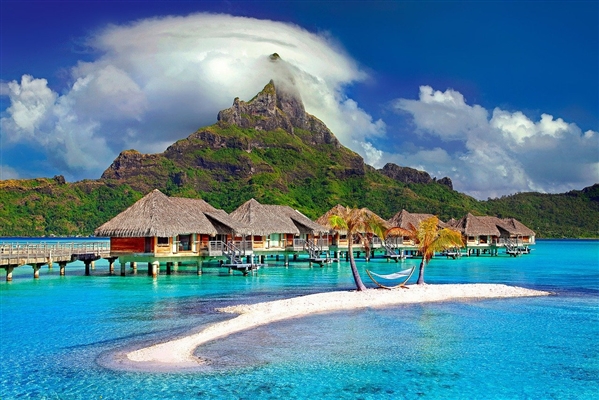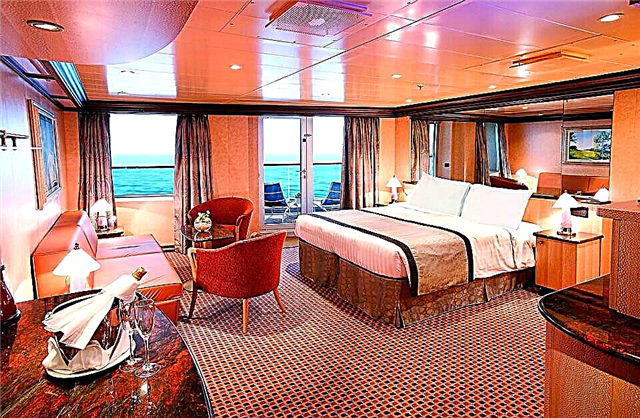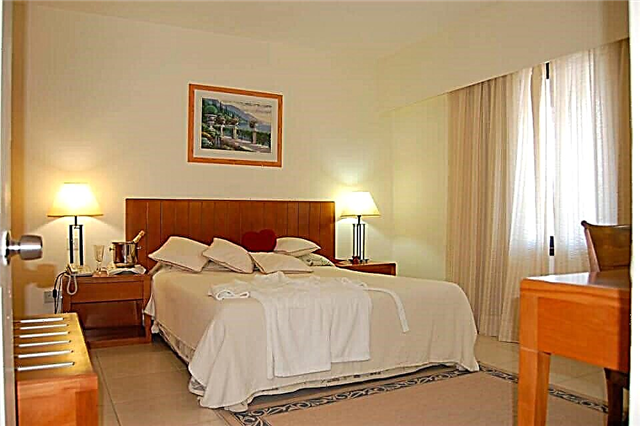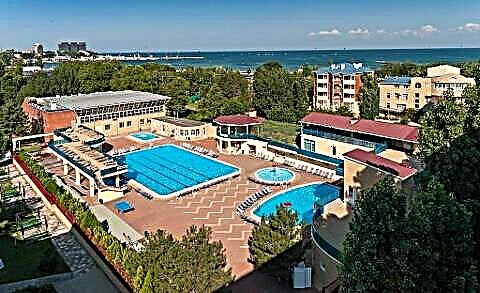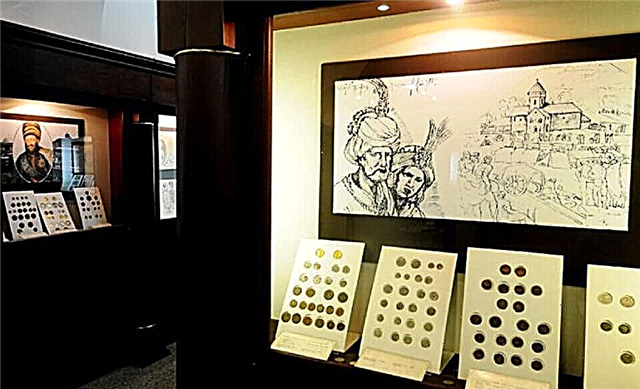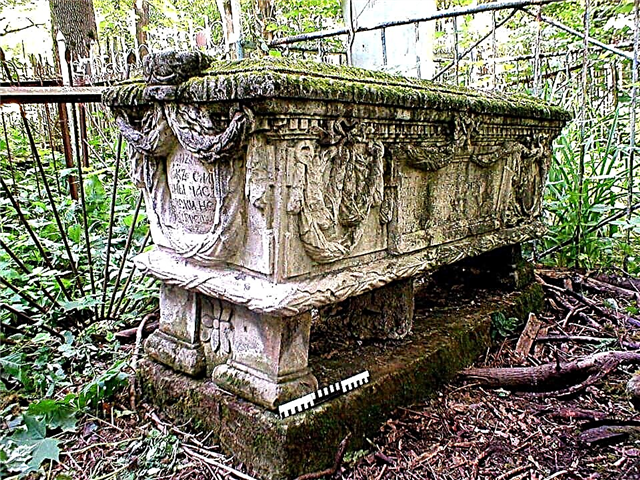Tula is the city of Russia's arms, literary and gastronomic glory. Samovars and gingerbread, gunsmiths, skilled craftsmen capable of shoeing even a flea, famous merchant dynasties, the first Russian industrialists - this is a city of workers, in which everything is authentic and reliable. Tula's museums and monuments preserve the original history of this land and its heroes.
Museum "Tula Gingerbread"

Open on weekdays from 10.00 to 17.00, ex. 10.00-16.00. One of the main symbols of the city of Tula - the printed gingerbread - has been known throughout the world for a long time. Tula gingerbread has been mentioned in historical sources since the 17th century. However, the Tula Gingerbread Museum appeared here only in 1996. Located in the former outbuildings belonging to the Lyalin family of famous Tula gunsmiths.
Tells the story of his native land ... in gingerbread. Everything, the most significant events, traditions, the life of ordinary people - everything is reflected in the art of Tula bakers, who carefully preserve the traditions of their ancestors. The gingerbread recipe has been known since 1685, and to this day all gingerbread cookies are made from the smallest to the gigantic ones.

They will show you unique gingerbread cookies, tell you about the rituals and holidays associated with this popular delicacy, show the technology of their production. After the tour, guests are treated to tea with gingerbread. There is a shop where you can buy this delicious freshest souvenir. The area is small, so you need to sign up for the excursion in advance - 2-3 weeks in advance. Excursions are held only until 16.00, their duration is 1 hour.
Necropolis of the Demidovs

The old noble family of the Demidovs glorified not only the Tula land. Representatives of this dynasty were industrialists, military leaders, patrons of the arts. In the very center of Tula, in 1996, a museum of this famous family was opened. Its center was the Nikolo-Zaretskaya church built in the 17th century, erected at the expense and at the suggestion of Akinfey Demidov.
This is one of the main historical sights of the city and is a combination of the Baroque with the motives of Old Russian architecture, typical for the churches of the Vladimir-Suzdal land. The ancestral tomb of the Demidov family is located inside the church. This is the only surviving intra-temple dynastic necropolis in our country.
Near the temple there is a monument to Nikita Demidov. The opening was timed to coincide with the 340th anniversary of the birth of this gunsmith and the actual founder of the metallurgical industry of our country. In a small museum, which is located on the territory of the former settlement of Tula gunsmiths, from among whom the Demidovs came out, samples of weapons of that time, household utensils, rare images of members of the famous family are presented.
The tomb is open for visits only in the warm season - from May 01 to November 01, every day, except Monday. On Tuesday, Wednesday and Sunday you can visit it from 10 am to 1 pm, and on Wednesdays, Fridays and Saturdays - until 8 pm.
Tula Kremlin

This is one of the most famous fortifications in Russia, along with Moscow, Novgorod and Kazan. It was erected at the beginning of the 16th century by the order of Vasily III. First, a wooden fortress was erected, and later - powerful brick walls. The Kremlin includes 9 towers, of which 4 are travel passes.
In those years, the fortress had an important defensive significance for the southern borders of Russia, it really became impregnable - for all the time of its existence, it was never taken by the enemy. For ordinary citizens, the Kremlin was not only a defensive structure, but also a home, private courtyards, churches, shopping arcades and even the first city street were located on the territory of the fortress.

After Peter's reforms and the annexation of the left-bank Ukraine to Rus, the Kremlin ceased to fulfill its fortification functions. However, it still remained a favorite place not only for the townspeople, but also for the authorities. Unique cathedrals are being erected on the territory of the Kremlin - Epiphany and Holy Dormition, famous for their grandiose paintings of the 18th century. In the 19th century, stone trading rows were built here. There are museums in the Kremlin now. The Museum of Weapons is located in the premises of the Epiphany Cathedral.
It keeps the history of Russian military valor and labor exploits of Tula artisans of many generations. And the Museum of Folk and Decorative-Applied Arts has everything that made up the usual life of the townspeople of the past and glorified this region - Filimonov toys, Belyov lace, samples of porcelain dishes, finds of archaeological excavations that took place here.
The visit is free of charge for all interested persons. To see the towers and expositions, you need to buy tickets at the nearby Museum of Samovars. The Kremlin is open every day, excluding Monday: from Tuesday to Friday from 10 am to 8 pm, and on Saturday and Sunday - until 6 pm.
Weapons museum

The Weapon Museum at 2 Oktyabrskaya (in the "Helmet") and in the Kremlin is open on Tuesdays, Wednesdays and Sundays. from 10 to 18 hours on Thursday, Friday and Saturday the working day is extended until 20.00 Day off - Monday, the last Tuesday of the month - a cleaning day. One of the oldest in our country. Leads its history from 1724, when, by order of Peter, they began to collect the best samples of Tula cannons.
Soon, this collection formed the basis of the Chamber of Rare and Exemplary Weapons, and at the end of the 19th century a special building was built for it. In 1924 it was opened to everyone. The museum survived evacuation during the war. The exposition grew and did not fit on the territory of the arms factory. Then it was decided to move the museum to the premises of the closed Epiphany Cathedral in the Kremlin. There it is located today.

In 2012, a large building with a dome resembling a hero's helmet-shishak in the very center of the city was built for the museum. Now there are samples of not only ancient weapons made by famous Tula craftsmen, but also military weapons of our time, including automatic ones, as well as cold, throwing, sporting and hunting weapons.
It has the richest collection of coins, historical documents, images and prints dedicated to this topic. Several halls of the permanent exhibition, in which multimedia demonstration means are actively used. A separate room is dedicated to weapons that were used in the First World War and the Great Patriotic War. There is a site with an exposition of large military equipment.
Samovar Museum

Another, even proverbial, symbol of the city is the Tula samovar. Tula hospitality and tea ceremonies have been known for a long time. Since 1990, a museum dedicated to samovars has been opened. It is located in an old building near the Kremlin. Here they will tell about the history of the origin of the production of samovars, about the first samovars - the Lisitsyns and the best "samovar dynasties" - the Batashevs, Fomins, Shemarins.
Here are collected the most interesting specimens - from the smallest to the giant samovar, "children's samovars" made for the family of Nicholas II. There is a souvenir and samovar shop. The work schedule is traditional: Monday is a day off. On other days it is open from 10 am, on Tuesdays, Wednesdays and Sundays - until 6 pm, and on Thursdays, Fridays and Saturdays - until 8 pm. The cleaning day is arranged every last Wednesday.
House-Museum of Veresaev

A museum of the Russian writer and Pushkinist V.V. Veresaev (Smidovich) has been opened in the only manor house that has survived in the city. It works every day, except Monday, from 10 am. On Tuesday, Wednesday and Sunday it closes at 6 pm, and on Thursday, Friday and Saturday it is open until 20. Open at the writer's parental home.Here he lived from birth until he entered St. Petersburg University.
The rest of his life and work were associated with Moscow. The Smidovich family was very famous in the city.

The writer's father was at the origins of the foundation of the city hospital, he himself worked as a doctor and was the initiator of the establishment of a sanitary commission in Tula, and his mother opened the first kindergarten here. It was located right here, in the Smidovichs' house.
The exposition tells about the life of the Russian intelligentsia, about the childhood of the writer. Here are collected household items of the family, reconstructed the interior of the living room, library and study of the writer in Moscow, presented many original documents, photographs, autographs of the writer. Meetings with writers, literary figures, musical and literary compositions are often held. Around the house, the former estate orchard has been restored, a birch alley has been planted, the atmosphere of the estate of V. Veresaev's childhood has been recreated.
Tula motorcycle museum "Moto-Auto-Art"

The founder and owner, its main keeper is Leonid Zyakin. He began collecting motorcycles produced at the Tula Machine-Building Plant, including unique antique copies, back in the 80s of the last century. Gradually, equipment became more and more, and in 2008 the owner registered a private collection as a museum of motor vehicles. But it was officially opened only in 2014, although long before that it became known among the people, and amateurs of automobiles regularly came to the village of Kharino to Leonid Pavlovich.
The collection contains rare specimens not only of the Tula plant, but also of other manufacturers, including one of the first Soviet motorcycles. All equipment is restored and repaired right here, at the repair and restoration base of the museum. Leonid Pavlovich himself conducts excursions, shows unique models and tells their story to his guests.
Tula Regional Art Museum

Officially in operation since 1919. However, its main fund was collected in the 19th century, when the Ancient Storage was created, later renamed the Chamber of Antiquities. Immediately after the revolution, the Art Collection Commission nationalized art from noble houses and estates.
These values, together with the fund of the Chamber of Antiquities, formed the basis of the opened Art Museum. During the war, the unique collection of the Tula Art Museum was saved thanks to the evacuation of all valuables to Siberia. In 1945 they returned home.

There are three permanent exhibitions: Russian art, Western European and contemporary art.
Domestic art is represented by the work of artists since the 16th century. Here are collected old icons, paintings by Polenov, Surikov, Shishkin, Kustodiev, Serov, Malevich.
In the Western European hall, in addition to graphics and applied art, you can enjoy the picturesque canvases of Italian and Flemish artists, here are also some works of the "little Dutchmen" - Molenard, Wonka, Jason.
The modern art hall displays works by great artists of the early 20th century: impressionists, cubists, constructivists, "world of art", futurists, etc. - Malevich, Goncharova, Kandinsky, Nesterov, Petrov-Vodkin and others. There are also canvases of representatives of socialist realism and modern trends in fine arts.
Several branches, one of which operates on the territory of the Tula Kremlin. It works every day, except Monday, from 10 am. On weekdays it is open until 8 pm and on weekends it closes at 6 pm.
Tula Regional Museum of Local Lore

It was founded in 1919 also on the funds of the former Chamber of Antiquities. And in 1927 it was transformed into a local history museum. Since 1932 it has been housed in an old merchant house built at the very end of the 18th century. This house once belonged to the merchant Beloborodov, it was built in the Baroque style, had a mezzanine, was decorated with ornaments and artistic casting.
It houses more than 140 thousand exhibits reflecting the life of Tula and its environs for many centuries: these are the famous Tula samovars, Filimonov toys, finds of archaeological expeditions and scientific research, rare books, collections of ancient coins, orders, things belonging to famous residents of the city.

Each hall is decorated in an individual style, they use modern multimedia complexes that allow interactive excursions and lectures. Often there are thematic excursions, meetings with interesting people, children's quizzes and contests, presentations, exhibitions. You can visit any day except Monday. Tuesdays, Wednesdays and Sundays - from 10 am to 6 pm, and on Thursdays, Fridays and Saturdays - until 8 pm.
Museum "Tula Necropolis"

The idea of creating this complex belonged to the oldest Tula ethnographer, Archpriest Rostislav Lozinsky. It was he who expressed the idea that ancient cemeteries are of great interest from the point of view of history and culture.
In the 1980s, he organized the Tula Necropolis Society, which was engaged in the study and restoration of ancient cemeteries. The museum began operating in 1998, after the death of Lozinsky. The complex includes three old buildings of the 18th century (they house the permanent expositions "Kraft's House" and "Old Tula Pharmacy") and three cemeteries of the same time, Vsekhsvyatskoye, Spasskoye and Solunskoye. These are almost 10 thousand highly artistic gravestones.
Representatives of the noblest Tula families, relatives of Pushkin and Chekhov, are buried here. Employees continue to study ancient monuments, clean up abandoned graves. Excursions are conducted, which not only examine ancient burials, but also tell about the life history of famous Tula masters, noble families, cultural figures, reveal the secrets of historical cemeteries, study the architectural style and Christian symbolism of monuments. Separate excursions are dedicated to war memorials.
The complex is open to the public from Wednesday to Saturday from 10 am to 7 pm, and on Sundays from 11 am. Closed Monday and Tuesday.



